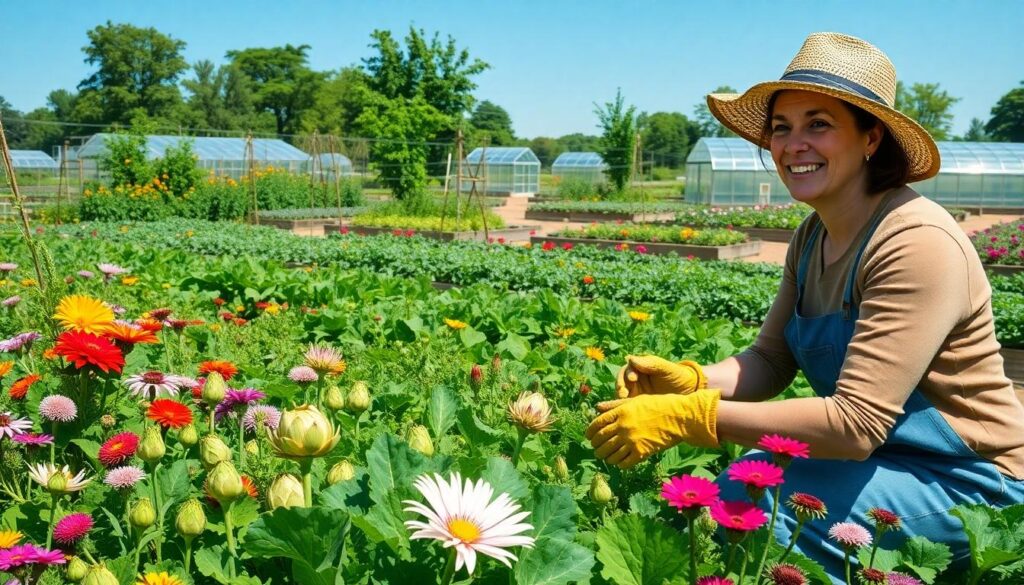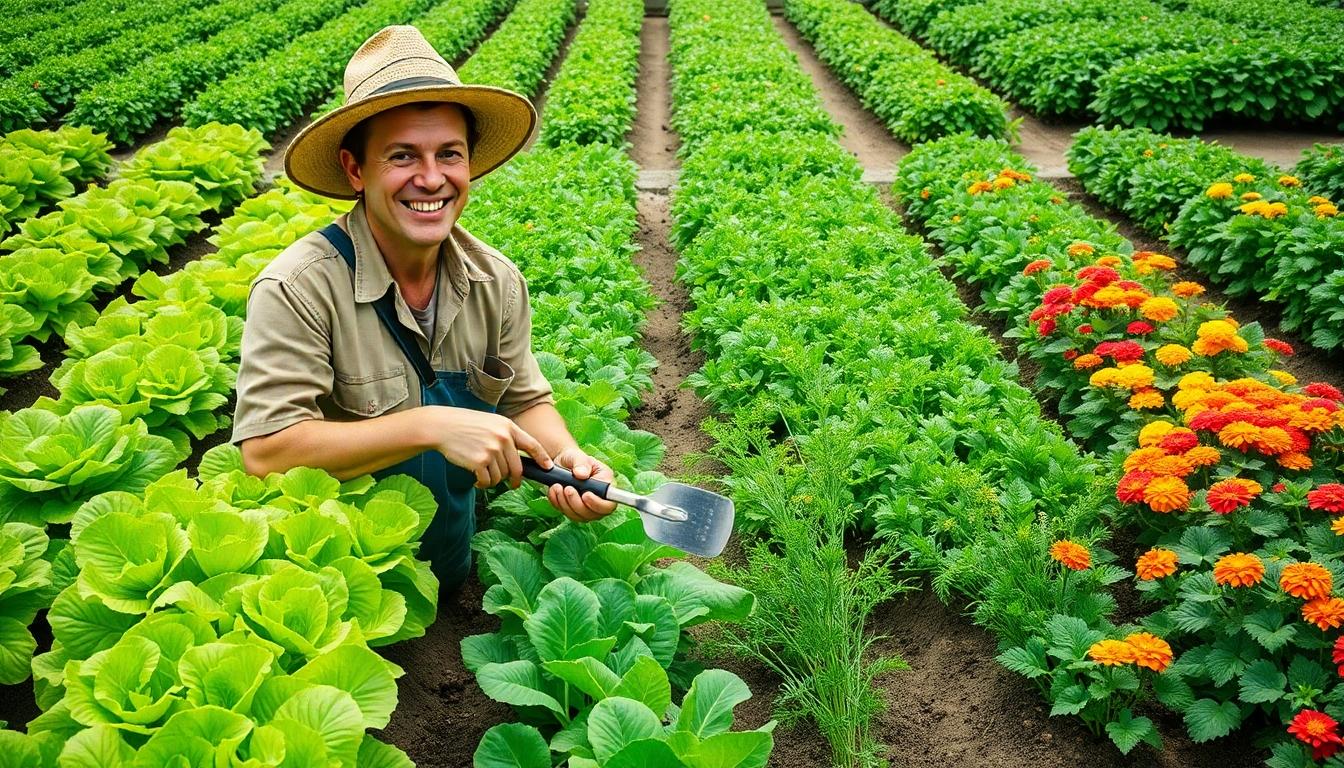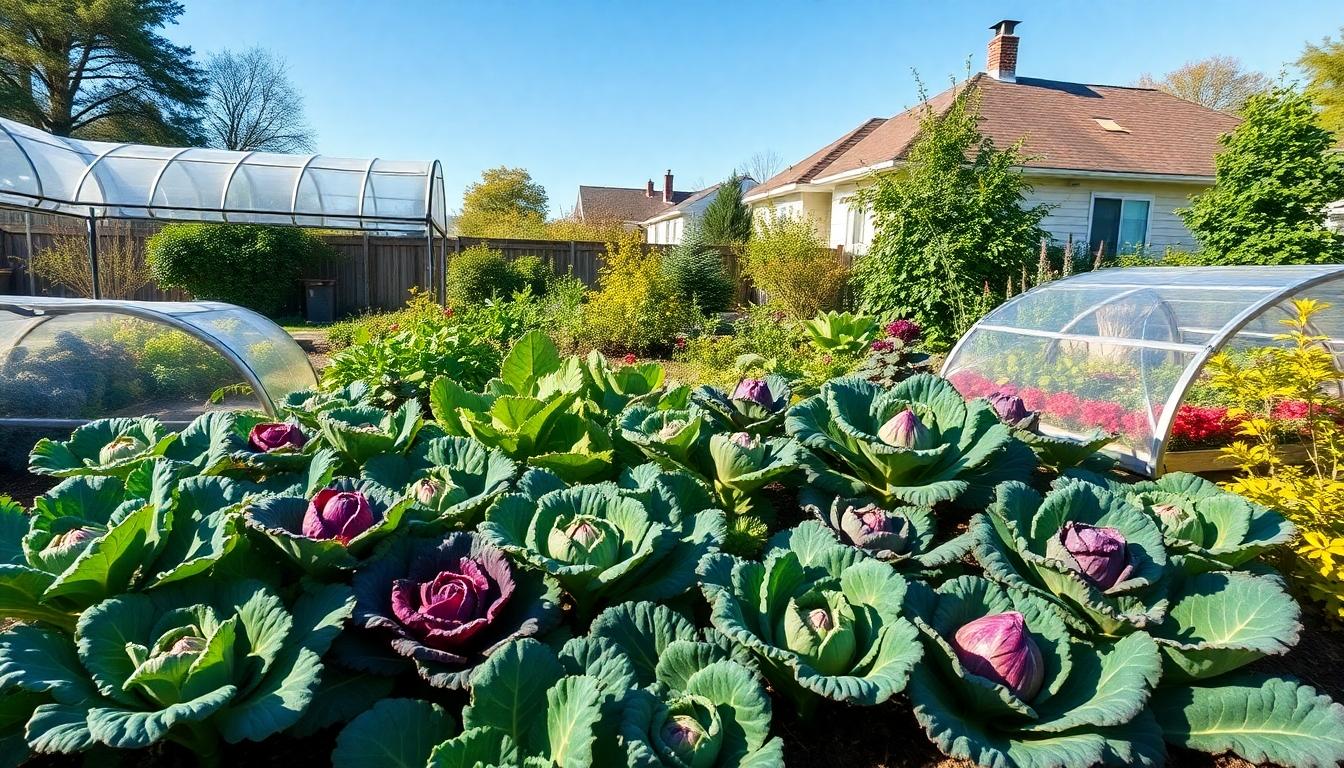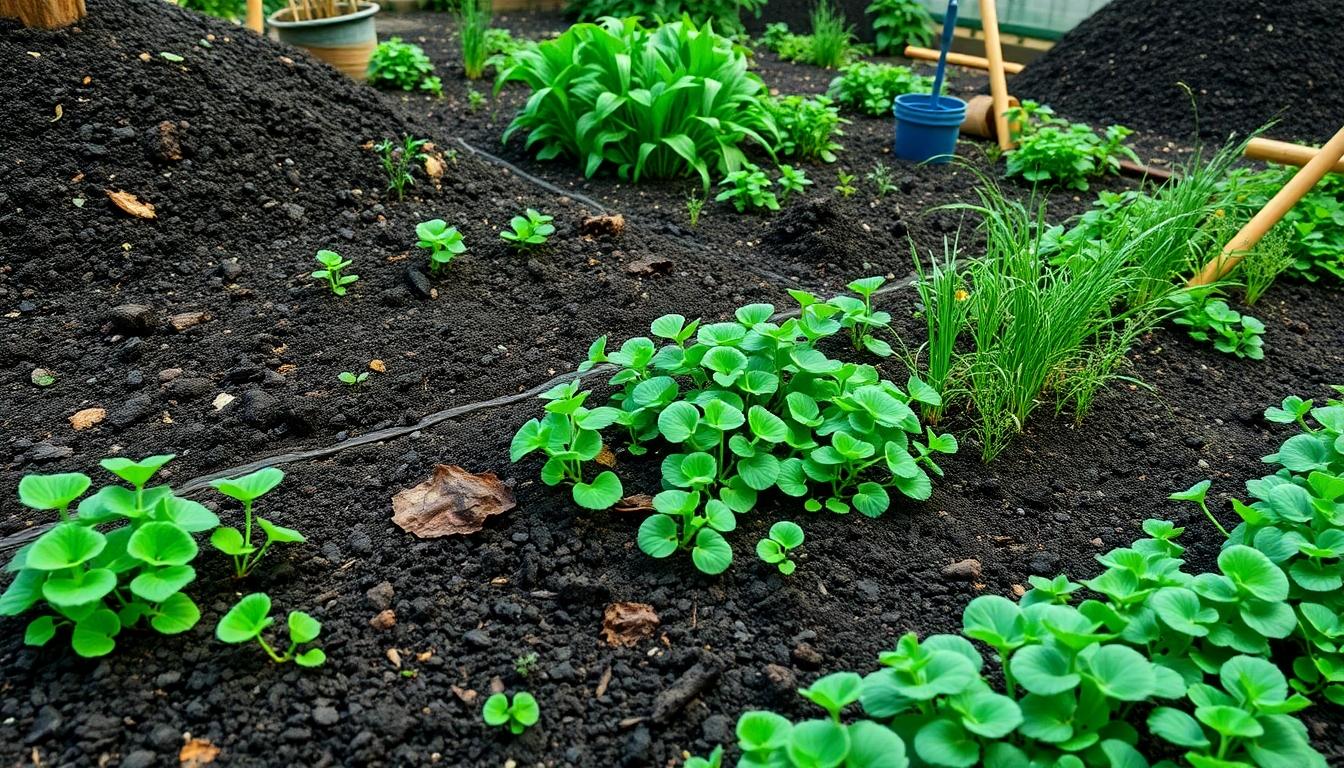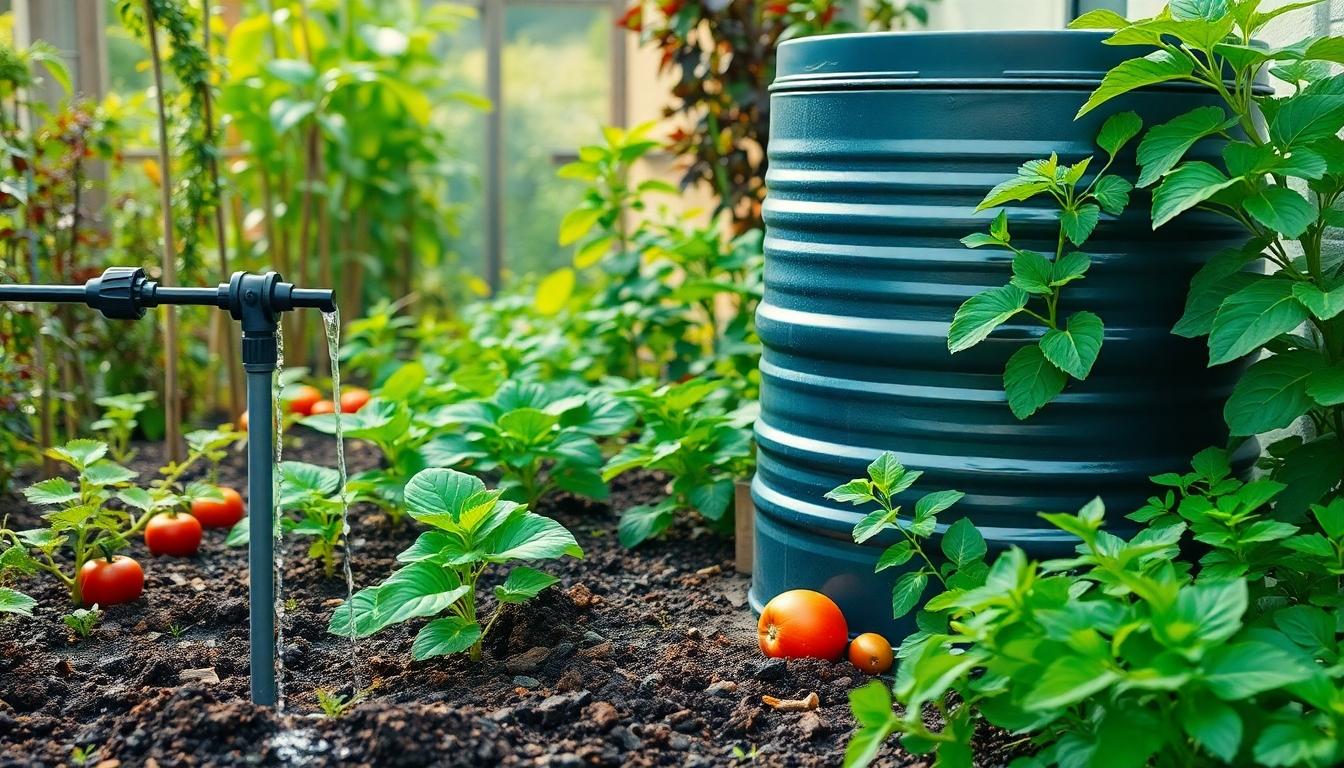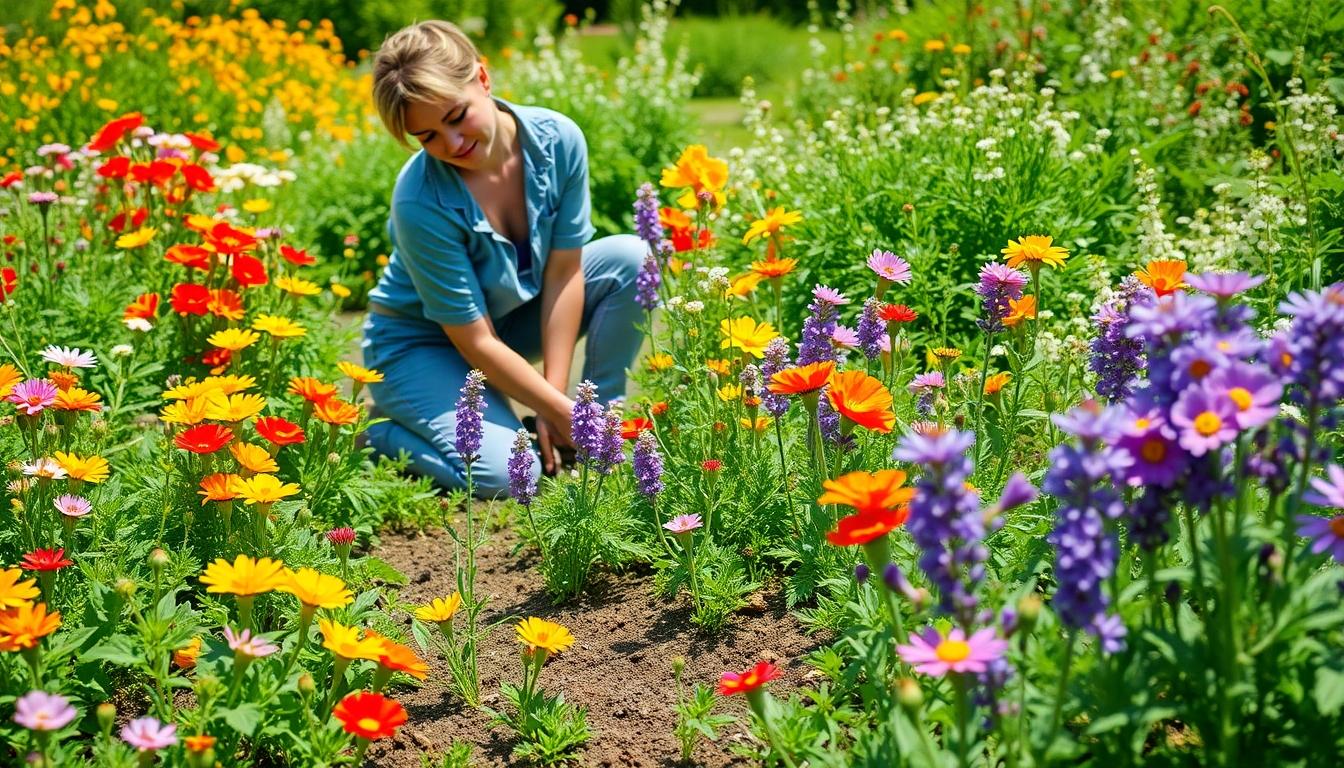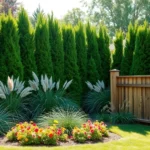Imagine stepping into your backyard and harvesting fresh vegetables all year round. We’ve discovered that creating a perpetually productive garden isn’t just a dream—it’s entirely achievable with the right techniques and planning.
A garden that keeps producing offers more than just sustainable food sources; it provides continuous joy and satisfaction while significantly reducing your grocery bills. By implementing strategic planting schedules, choosing the right plant varieties, and utilizing season-extension methods, we’ll show you how to transform your garden into a non-stop food factory. These proven methods have helped thousands of home gardeners enjoy fresh harvests even when their neighbors’ plots have long gone dormant.
Choosing High-Yield Perennial Vegetables for a Garden That Keeps Producing
Perennial vegetables are the backbone of a continuously productive garden, offering harvests year after year with minimal replanting effort. These long-lived plants establish deep root systems that help them withstand environmental stresses while producing reliable yields season after season.
Top Perennial Vegetables for Continuous Harvests
Asparagus stands out as one of the most rewarding perennial vegetables, producing tender spears for up to 20 years once established. Within 2-3 years after planting, asparagus beds will provide abundant spring harvests for weeks on end.
Artichokes deliver impressive yields in moderate climates, with each plant capable of producing 20-30 flower buds annually over a 5-7 year lifespan. Their dramatic silvery foliage adds ornamental value to edible landscapes while delivering delicious harvests.
Rhubarb excels in cooler regions, offering reliable spring harvests of tart stems perfect for pies and preserves. A single well-established rhubarb plant can yield 2-3 pounds of stalks annually for up to 15 years when properly maintained.
Jerusalem artichokes (sunchokes) produce nutritious, nutty-flavored tubers and can yield 3-5 pounds per square foot in favorable conditions. Their prolific nature makes them ideal for gardeners seeking maximum food production from minimal space.
Egyptian walking onions multiply themselves by producing topsets (bulbils) that eventually bend to the ground and take root. These unique alliums provide three harvests: green onions in spring, topsets in summer, and underground bulbs in fall.
Sorrel delivers early-season harvests of lemony leaves that add bright flavor to salads and soups. French sorrel varieties maintain production through multiple seasons, offering fresh greens when other plants are just getting started.
Sea kale produces blanched spring shoots similar to asparagus followed by edible leaves and flowers throughout the growing season. This coastal native thrives for decades with minimal care while providing diverse harvests.
Planning Your Perennial Vegetable Layout
Designate a dedicated permanent bed for perennial vegetables away from annual crops that require frequent soil disturbance. Perennials develop extensive root systems that shouldn’t be disrupted by seasonal tilling or cultivation activities.
Consider mature sizes when spacing perennial vegetables, allowing ample room for plants to reach their full potential over many years. Asparagus needs 18 inches between plants, while globe artichokes require 4-5 feet spacing to accommodate their eventual spread.
Group perennials according to their water requirements to ensure efficient irrigation management. Jerusalem artichokes tolerate drier conditions once established, while rhubarb performs best with consistent moisture throughout the growing season.
Incorporate vertical layers by combining tall perennials like sea kale with lower-growing plants such as sorrel to maximize space utilization. This multi-dimensional approach mimics natural ecosystems while producing more food from the same footprint.
Integrate nitrogen-fixing companions like comfrey around perennial vegetables to enhance soil fertility naturally. Comfrey’s deep roots mine nutrients from subsoil layers and its leaves can be used as nutrient-rich mulch for neighboring plants.
Plan access paths that allow harvesting without compacting soil around established plants. Creating stepping stone pathways between perennial beds provides stable footing while protecting valuable root systems from damage.
Map your garden layout on paper before planting, considering how perennials will interact as they mature over multiple seasons. This foresight prevents future overcrowding issues and ensures compatible plant communities that support each other’s growth.
Implementing Succession Planting Strategies for Uninterrupted Yields
Succession planting is a game-changing technique that ensures your garden keeps producing throughout the growing season. This strategic approach involves planting crops at staggered intervals, effectively extending your harvest period and maximizing both yield and garden space utilization.
Staggered Planting Schedules for Continuous Production
Staggered planting schedules form the backbone of a continuously productive garden. Starting seeds indoors or outdoors at regular intervals creates a steady supply of seedlings ready for transplanting as space becomes available. Planning ahead ensures that as one crop matures and is harvested, another is ready to take its place, keeping your garden productive throughout the season.
Try these effective succession planting strategies:
- Plant the same crop every 2-3 weeks to ensure continuous harvests of fast-growing vegetables like lettuce, radishes, and spinach.
- Use cool and warm-season crop rotations by planting cool-season crops early in spring, following with heat-loving vegetables in summer, then returning to cool-season crops in fall.
- Choose varieties with different maturity dates to naturally spread out harvest times without additional planting efforts.
- Maintain a seedling pipeline by starting the next round of seeds while current crops are still growing in the garden.
Companion Planting for Maximized Garden Space
Companion planting complements succession strategies by optimizing every inch of garden space. Growing exact plants together enhances growth, deters pests, and improves soil quality throughout your growing area. Smart companion planting creates a diverse, balanced garden network that supports your succession planting goals.
Effective companion planting tactics include:
- Pair tall plants with shade-loving crops to create natural microclimates that benefit both plants.
- Introduce pest-repelling companions like marigolds, nasturtiums, and herbs among your vegetable crops to reduce insect damage naturally.
- Plant nitrogen-fixing plants such as beans and peas alongside heavy feeders to improve soil fertility without additional fertilizers.
- Interplant quick-growing crops between slower-developing vegetables to harvest early yields while the main crop matures.
These succession and companion planting techniques work together to transform your garden into a continuously productive space that delivers fresh harvests throughout the growing season.
Creating a Four-Season Garden That Produces Year-Round
A truly productive garden doesn’t need to shut down when temperatures drop. With strategic planning and the right techniques, your garden can yield fresh produce throughout all four seasons.
Cold-Weather Crops for Winter Harvesting
Winter gardens can be surprisingly productive with the right crop selection and protection methods. Overwintering vegetables like broccoli, kale, and cabbage planted in late summer or early fall will continue to grow and provide harvests during the winter months. These cold-hardy crops actually develop sweeter flavors after exposure to frost, making winter harvests especially delicious.
Cold frames offer an excellent solution for protecting winter crops from harsh conditions. These simple structures with glass tops create a protective microclimate, allowing plants to thrive even when outdoor temperatures drop significantly. By implementing these cold-weather growing strategies, we can maintain access to fresh vegetables when most gardens lie dormant.
Using Season Extension Techniques
Row covers, hoop houses, and cold frames serve as valuable tools for extending your growing season beyond traditional boundaries. These protection methods create warmer microclimates that shield plants from frost, allowing us to start seeds earlier in spring and continue harvests later into fall. Many gardeners gain 4-8 additional weeks of growing time through these simple structures.
Succession planting ensures continuous harvests throughout the warmer months. By sowing quick-maturing varieties at regular intervals, we establish a steady supply of fresh vegetables from early spring through late fall. This technique works particularly well with lettuce, radishes, beans, and other crops that mature rapidly.
Additional Tips for Year-Round Production
Proper soil care forms the foundation of a productive four-season garden. Mulching well and adding soil amendments regularly maintains fertility and supports plant health year-round. Healthy soil produces stronger plants that better withstand seasonal stresses.
Indoor growing methods like hydroponics and aquaponics offer answers for year-round production regardless of outdoor conditions. These systems create controlled environments where plants thrive even during the coldest months, ensuring fresh harvests throughout winter.
Starting seeds indoors under grow lights during cold months gives you a important head start on the growing season. This preparation ensures transplants are ready when conditions improve outdoors, effectively extending your productive season. With seedlings already developed, we can maximize growing time once weather permits outdoor planting.
Establishing a Thriving Food Forest: The Ultimate Self-Sustaining Garden
Taking your productive garden to the next level means creating a food forest – a self-sustaining network that mimics natural woodland but produces abundant food. We’ve outlined the essential steps to establish your own thriving food forest below.
First, conduct a thorough site assessment to understand your climate, soil conditions, sunlight patterns, and water sources. Setting clear goals will guide your plant selection and design choices, whether you’re aiming for maximum food production or increased biodiversity. Choose a layout that works for your space – popular options include savannah, orchard, or woodland systems.
Layering Techniques for Food Forest Design
Layering serves as the foundation of successful food forest design by maximizing both space and biodiversity. We create these layers to mimic natural forest ecosystems where plants of different heights coexist and support each other. The canopy layer, consisting of tall fruit and nut trees, forms the uppermost part of your food forest. Below this, the sub-canopy layer includes smaller fruit trees and shrubs that thrive in partial shade.
The shrub layer introduces nutrient-rich plants that often produce berries and other edible fruits. Herbs and vegetables make up the herb layer, providing ground-level production. Ground cover plants prevent soil erosion while often offering additional harvests. Don’t forget the rhizome layer – underground plant structures that contribute to soil health and sometimes yield edible parts.
Selecting Fruit and Nut Trees for Long-Term Production
Trees form the backbone of any food forest, providing decades of harvests with minimal maintenance. Climate tolerance should be your primary consideration – select varieties that will thrive in your local growing conditions rather than struggling against them. We recommend choosing native species whenever possible, as they’re already adapted to local conditions.
Diversity plays a crucial role in extending your harvest season. Include a thoughtful mix of early, medium, and late-maturing trees to ensure continuous production throughout the growing months. Space consideration remains vital when planning your food forest – allow ample room between trees based on their mature sizes to prevent future overcrowding. Trees planted too closely compete for resources and eventually reduce your overall yield.
Building Healthy Soil Systems for Sustained Garden Productivity
The foundation of any continuously productive garden lies in healthy, nutrient-rich soil. Building resilient soil systems ensures your garden can sustain production season after season without depleting essential resources.
Composting Methods to Maintain Soil Fertility
Composting serves as a cornerstone technique for maintaining vibrant soil health in productive gardens. This natural process transforms garden and kitchen waste into a nutrient-rich soil conditioner that enhances both physical and biological soil properties. When creating compost, we’ve found that balancing green materials (grass clippings, vegetable scraps) with brown materials (dried leaves, cardboard) creates the ideal environment for decomposition and produces the highest quality amendment.
Applying compost effectively requires strategic timing for maximum benefit. Early spring applications support vigorous plant growth during the main growing season, while fall applications prepare your soil for winter recovery. Regular soil testing helps ensure you’re maintaining balanced nutrient levels throughout your garden beds. For established plants, topdressing works wonderfully as it adds nutrients without disturbing sensitive root systems. Compost tea offers another application method that delivers quick nutrients to plants that need an immediate boost.
Cover Cropping for Soil Regeneration
Cover crops function as living soil builders in a productive garden system. These specialized plants actively regenerate soil by adding organic matter, creating stronger soil structure, and increasing overall biodiversity. Legume cover crops like clover and vetch excel at fixing nitrogen from the air into the soil, essentially providing free fertilizer for future plantings.
Soil erosion prevention represents another major benefit of cover cropping. The extensive root systems of cover crops like winter rye and buckwheat effectively hold soil in place during heavy rains or strong winds, maintaining the integrity of your garden beds. Cover crops also support diverse microorganisms that enhance soil health by creating complex food webs below the surface. We’ve observed that gardens implementing regular cover cropping cycles show markedly improved soil quality after just a few seasons, resulting in plants that demonstrate greater resilience to stresses like drought or disease pressure.
Water Management Techniques for a Resilient Productive Garden
Smart water management is essential for maintaining a productive garden that keeps yielding regardless of weather conditions. By implementing the right techniques, you’ll create a resilient growing environment that supports continuous harvests while conserving this precious resource.
Efficient Irrigation Systems for Consistent Production
Drip irrigation systems deliver water directly to plant roots, significantly reducing waste while ensuring optimal absorption. These systems can be paired with mulch to maximize efficiency and minimize evaporation from the soil surface. Installing timers allows you to schedule watering during cooler hours—early morning or pre-sunset—when evaporation rates are lowest. Water needs change throughout the growing cycle, so adjust your irrigation schedule based on plant growth stages, prioritizing young plants and those in fruiting phases that require more consistent moisture. Soaker hoses provide an excellent alternative for gardens with clay soil, offering low-volume, deep watering that penetrates effectively without runoff.
Rainwater Harvesting to Support Your Garden
Collecting rainwater in barrels or dedicated storage systems creates a free, sustainable water source to supplement your garden’s irrigation needs. This harvested water works perfectly with drip or soaker systems, creating a highly efficient watering solution that reduces dependence on municipal water supplies. Ensure your water collection system provides clean water at sufficient volume (2-5 gallons per minute) for optimal drip irrigation performance. Combining rainwater usage with comprehensive mulching strategies conserves soil moisture even further, creating a garden that remains productive even during dry periods. Other effective water management techniques include adding organic matter to soil, which can improve water retention capacity, and growing drought-resistant crops suited to your local climate that naturally require less irrigation while maintaining productivity.
Creating a Self-Seeding Garden That Replenishes Itself
A self-seeding garden naturally replenishes itself year after year, creating a sustainable industry that requires minimal intervention. This approach not only reduces maintenance but also allows your garden to evolve organically over time.
Plants That Reliably Self-Sow
Annual and biennial plants form the backbone of any self-seeding garden due to their natural reproductive cycle. Purpletop vervain (Verbena bonariensis) stands out as an excellent self-sower, creating airy purple blooms that attract pollinators while establishing new plants each season. Mexican poppy (Argemone mexicana) offers dramatic yellow flowers and will readily distribute seeds throughout suitable garden areas. Snow-on-the-mountain (Euphorbia marginata) delivers striking white-edged foliage and dependably returns from its own seeds year after year.
Perennials can also participate in the self-seeding cycle when we allow them to complete their natural seed production. Many gardeners overlook this capability in perennials, yet selective deadheading (removing spent flowers before seed formation) can control their spread while still allowing some areas to produce volunteer seedlings.
Managing Voluntary Plants Effectively
Seed ripening represents the crucial first step in developing a successful self-seeding garden. We must allow seeds to fully mature on their parent plants before natural dispersal occurs, ensuring they’ve developed sufficient viability for successful germination in the next growing cycle.
Mulch management plays a vital role in supporting self-seeding success. Areas designated for self-sowing plants should remain relatively free of thick mulch layers, as even beneficial organic mulches can prevent seeds from reaching the soil and germinating properly.
Thinning seedlings requires attention as volunteer plants begin to emerge. Spacing seedlings approximately 6 to 8 inches apart prevents overcrowding and competition for resources, promoting healthier development of the remaining plants. This process often demands multiple rounds of assessment and selective removal as plants grow and their space requirements increase.
Water and nutrient support remain essential for seedling success. Regular watering helps establish young volunteers, while introducing organic mulch around established seedlings (not before they emerge) helps retain soil moisture and suppress unwanted weeds. This balanced approach creates ideal conditions for self-sowing plants to thrive while maintaining control over their distribution throughout your garden.
Conclusion: Enjoying the Fruits of a Garden That Keeps Producing All Year Long
Creating a garden that never stops giving isn’t just a dream but an achievable reality with the right techniques. We’ve explored perennial vegetables soil health water management succession planting and food forest systems that work together to create continuous harvests.
The journey to year-round production requires thoughtful planning but rewards us with fresh nutritious food regardless of season. By implementing these strategies you’ll reduce grocery bills strengthen food security and develop a deeper connection with natural growing cycles.
Remember that your continuously productive garden will evolve over time becoming more resilient and bountiful with each passing season. Start small carry out these methods gradually and soon you’ll enjoy the satisfaction of harvesting fresh produce from your garden every month of the year.
Frequently Asked Questions
What is a continuously productive garden?
A continuously productive garden is a designed growing space that provides fresh harvests year-round. It combines strategic planting schedules, appropriate plant varieties, and season-extension methods to ensure there’s always something ready to harvest, even during traditional off-seasons. This approach provides sustainable food sources, ongoing gardening enjoyment, and reduced grocery expenses.
Which perennial vegetables should I include in my garden?
Key perennial vegetables include asparagus, artichokes, rhubarb, Jerusalem artichokes, Egyptian walking onions, sorrel, and sea kale. These long-lived plants provide reliable harvests year after year with minimal replanting. Choose varieties suited to your climate and growing conditions for best results. Consider designating a permanent bed specifically for these perennials.
How does succession planting work?
Succession planting involves staggered planting schedules to maintain continuous harvests. Plant the same crop every few weeks, rotate between cool and warm-season crops as seasons change, and maintain a seedling pipeline ready for transplanting. This technique prevents gaps in production and maximizes your growing space efficiency throughout the entire growing season.
What is companion planting and why is it beneficial?
Companion planting strategically combines plants that benefit each other. Benefits include pairing tall plants with shade-loving crops, introducing pest-repelling companions like marigolds, and interplanting quick-growing crops with slower ones. This maximizes garden space, enhances plant growth, reduces pest problems, and increases overall yields in your continuous garden system.
Can I garden during winter months?
Yes! Winter gardening is possible with cold-weather crops like broccoli, kale, and cabbage. Use season extension techniques such as cold frames, row covers, and hoop houses to protect plants from harsh conditions. You can also employ indoor growing methods like hydroponics or start seeds indoors under grow lights to ensure continuous production year-round.
What is a food forest and how do I create one?
A food forest is a self-sustaining garden system that mimics natural woodland while producing food. To create one, conduct a site assessment, set clear goals, and implement layering techniques—from tall fruit trees (canopy) down to ground covers. Select diverse, climate-appropriate fruit and nut trees with proper spacing to prevent overcrowding and competition for resources.
How do I maintain soil health in a continuously productive garden?
Maintain soil health through regular composting (balancing green and brown materials), implementing cover cropping to regenerate soil and prevent erosion, and adding organic matter to improve structure. These practices ensure your soil remains nutrient-rich year after year, supporting continuous production without depleting essential resources.
What water management techniques work best for year-round gardens?
Implement efficient irrigation systems like drip irrigation or soaker hoses for optimal water absorption. Harvest rainwater using clean collection systems to supplement irrigation needs. Add organic matter to soil to improve water retention capacity. Select drought-resistant crops suited to your climate. These strategies ensure reliable water supply while conserving resources.
What are self-seeding plants and how do they help?
Self-seeding plants naturally reproduce without intervention, creating a garden that replenishes itself. Examples include purpletop vervain, Mexican poppy, and snow-on-the-mountain. These plants reduce the need for annual replanting while providing continuous harvests. Manage voluntary seedlings by proper spacing, adequate watering, and appropriate mulch application for optimal growth.
How do I plan the layout for perennial vegetables?
Designate a permanent bed away from annual crops, consider mature plant sizes for proper spacing, group perennials with similar water requirements together, and incorporate vertical layers to maximize space. Include nitrogen-fixing companions like comfrey to enhance soil fertility, and plan access paths for easy harvesting without damaging established plants.

